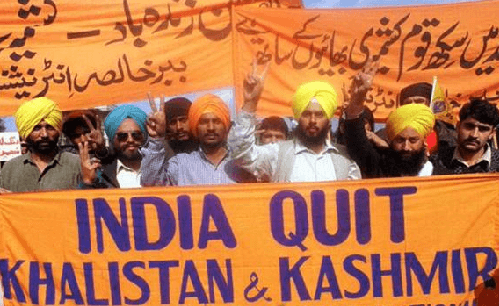The diplomatic nuances are now over as the conflict between India and China has entered into an open eco-system where battles lines for future are being laid, as China has magnified its machinations in the Himalayas and has already gulped 38,000 sq. km of Indian land in Ladakh.
This was acknowledged by India’s defence minister Rajnath Singh, in the parliament on September 17, 2020, while India’s PM Modi had on June 20, 2020, said that no one had intruded into Indian territory.
Leaving the nation in a tizzy as to who of the two is correct? But, now with all said and done, India is firmly with the US, with which it is slated to sign Basic Exchange and Cooperation Agreement (BECA) on the coming October 26/27, 2020, which is an announcement that India and US are now to be entwined forever, as US had always wanted India to come forward to contain China and the conflict in the Himalayas gave this golden opportunity to the US to make India fall to US designs.
Throughout the conflagration which also saw India losing 20 soldiers on June 15, 2020, and while India sought the US help, all US President Donald Trump offered was mediation.
The last bait came on September 25, 2020, tells TOI and finally, Trump lumped India with Russia and China to have hidden the number of deaths due to COVID-19, on September 30, 2020, which made India kneel down to the US. Later, the US officially declared that Arunachal Pradesh is a part of India on October 2, 2020, which was not a coincidence.
Hence, first US got India sufficiently bashed up, to force India to comply, to US manoeuvres, as the US which had to be forced out of Afghanistan, miserably after 19 years, is now to have a permanent station in India.
With the BECA pact that the US and India are set to ink, New Delhi has started to hit China where it hurts the most: Taiwan – towards which China is extremely sensitive and has sparred even with the mighty US.
India could not be left behind and an effort of upping the ante on Taiwan was felt when some media houses decided to advertise Taiwan national day on October 10, 2020’, towards which Chinese embassy said ‘Taiwan is an inalienable part of China’ and Taiwan foreign minister Joseph Wu responded by saying ‘Get Lost’.
The whole scenario was envisaged in a scathing article in Global Times, China’s government media outlet, on October 18, 2020, titled as ‘India to invite trouble playing Taiwan card’, it said ‘India Today TV broadcast an interview with Taiwan’s “Foreign Minister” Joseph Wu, which served as a platform for him to spread Taiwan secessionist voices.
In fact, India had well assuaged China’s reaction which as a ‘quid pro quo’ would be to target the North-Eastern states of India, which India had long been deliberating, in order to face a ‘two-and-a-half-front- war’ i.e. on external as well as internal levels highlighted by the then army chief Bipin Rawat.
The article from GlobalTimes spelt the same language as it tapped on India’s preparation and referred, ‘the India(n) military (had) said it has been preparing for a “two-and-a-half” front war, referring to Pakistan, China, and internal insurgencies.
Internal insurgencies include secessionist forces and terrorists. If India takes the move to support “Taiwan independence,” China has every reason to support separatist forces in Northeast Indian states such as Tripura, Meghalaya, Mizoram, Manipur, Assam and Nagaland.
China could even support the restoration of Sikkim’ monarchy. China has long considered what Mao had described as ‘Tibet Right Palm’ with Sikkim, Ladakh, Nepal, Bhutan and Arunachal Pradesh as its five fingers.

Who are these terrorists? Though China did not name Khalistan or Kashmir, experts say that Kashmir has well been on the boil, since August 5, 2019, when India’s PM Modi scrapped Article 370 from JK&L to invite ire from both Pakistan and China.
Ironically, JK former CM and National Conference patron Farooq Abdullah also recently, said to that China will help restore Article 370, which NC allegedly later denied.
China has now completely come out in the open as it has declared that ‘though these separatist forces ha(d)ve requested for China’s support, Beijing did not respond to them given diplomatic principles and the friendship between China and India.
But if India jeopardizes these ties, China has no reason to adhere to it either. If India supports secessionist forces in China and disregards China’s sovereignty and territorial integrity, it should be aware of the consequences’.



